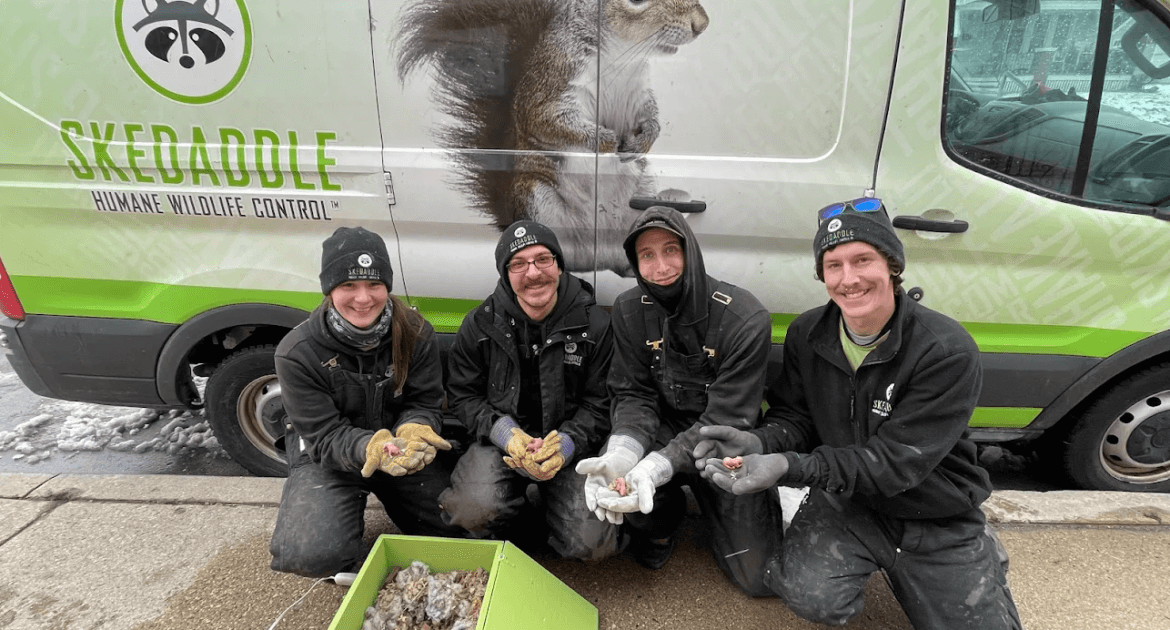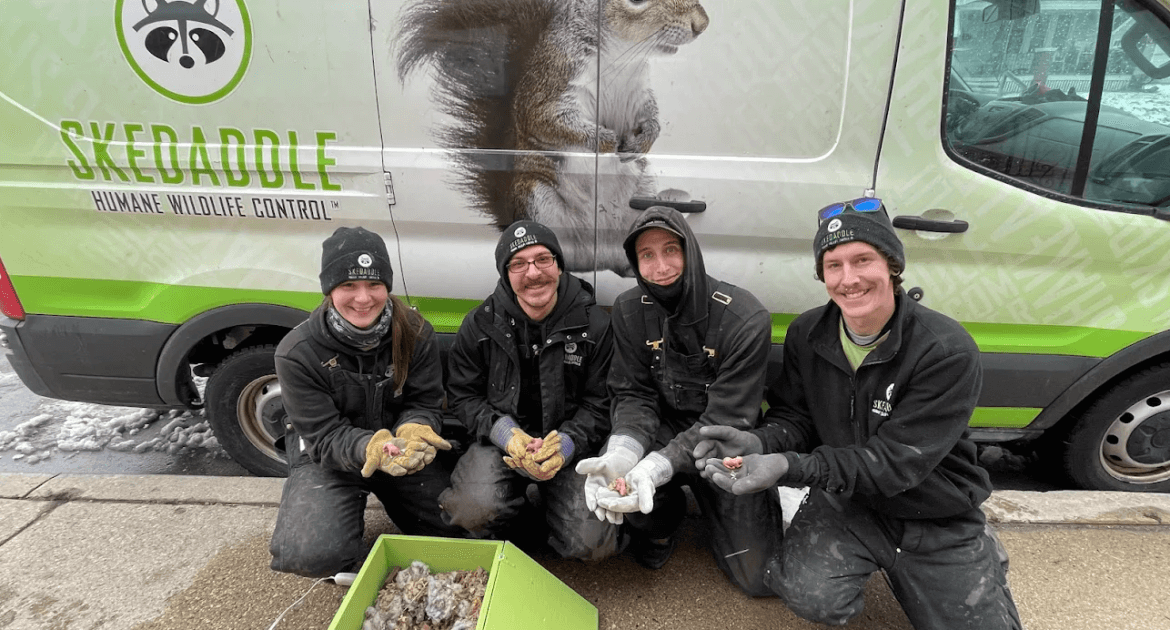When you think of baby wildlife, you likely picture the warm months of spring and summer when many species give birth to their litters. However, it is not always clear what young wildlife does during the fall and winter months. . Let’s talk about the baby wildlife lifecycle for the creatures you are most likely to find in your yard and, unfortunately, in your home.
What Is the Lifecycle of Baby Wildlife?
Many — but not all — wildlife species grow up much faster than humans, and the most common urban species certainly do. However, each one has a slightly different lifecycle. Continue reading to learn more about baby bats, raccoons, skunks and squirrels!
Lifecycle of Baby Bats
Baby bats are born in late spring to early summer and are entirely dependent on their mom for about four to six weeks, staying in the roost and nursing for much of that time. They often learn to fly by the time they are about a month old and may start venturing out with mom to test their wings.
As the end of summer approaches, baby bats are catching their meals and fending for themselves. They are capable of surviving on their own and begin eating as much as possible and looking for a place to settle over the winter, during which time they enter torpor.
Lifecycle of Baby Raccoons
Baby raccoons are born in early spring and are helpless for about four to six weeks. Females raise their little ones without the help of the males. At around three to four months of age, the kits are weaned and begin heading out with mom to learn foraging skills.
By the time they are five months old, they know what to do to survive, but they stick around with their mom for about a year. Mom and her offspring rotate through dens in the area, though they generally find one place to stay for the winter months. Raccoons also enter torpor, only rousing occasionally in search of food.
Lifecycle of Baby Skunks
Baby skunks begin life much as raccoons do. Their mothers take sole responsibility for raising them. They depend entirely on her for about six weeks, sticking to the den and nursing. However, they can begin spraying at just three weeks old.
When they are six weeks old, they venture out into the world with their mother to learn the ropes. Unlike raccoons, skunks are independent at around three to four months, leaving the maternal den to make their way into the world.
Lifecycle of Baby Squirrels
Baby squirrels are rarely seen, as they don’t leave the nest much during the first two months of life. By the time they are three months old, they have their legs, so to speak, and begin to leave the nest with mom to learn how to be a squirrel.
Squirrels are fast learners once they begin to learn what they need to do to survive. They are usually ready to make it on their own at four months old and leave their mom’s nest for an independent life.
How Can You Help Baby Wildlife Survive?
The most important thing you can do for baby wildlife is to allow the mothers the space to raise their little ones to fend for themselves. This does not mean you need to accept them as your houseguests. Instead, contact Skedaddle Humane Wildlife Control. One of our wildlife removal and exclusion goals is to ensure families remain together.
We use special heated baby boxes that hold the baby wildlife we find together outside your home. We then set up a one-way entry that lets mom come out to her little ones but not go back inside. The mother can then relocate her babies to another den, where she can continue to raise them safely. If you discover wildlife sharing your home, get in touch with us to schedule services. We’ll take care of the safe and humane removal process while ensuring baby wildlife have the best chance of survival.




